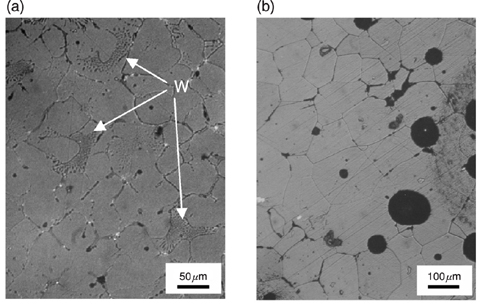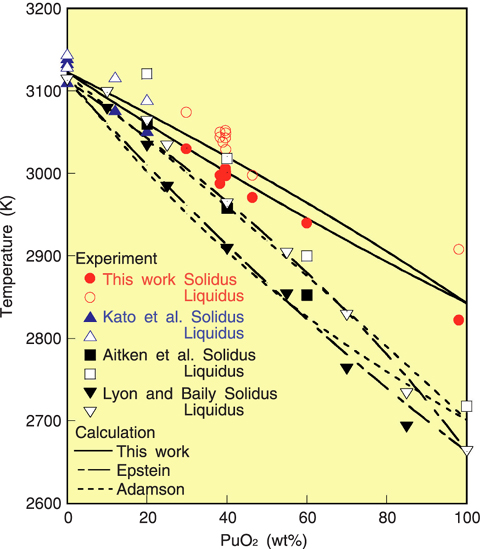
Fig.14-5 Microstructures of heated MOX with 40% Pu content

Fig.14-6 Solidus and liquidus temperatures in the UO2-PuO2 system
It is essential that nuclear fuels are operated in an undamaged condition during their entire lifetime. Therefore, the maximum temperature of the fuel is limited by the melting temperature of MOX.
JAEA has developed a fast reactor recycle technology. As a part of the development, the basic properties of uranium and plutonium mixed oxide (MOX) fuels that are used as fuel in the fast reactor have been studied. The melting temperature of MOX fuels was measured during the period of 1960-1970's as functions of Pu content and O/M ratio, and their phase diagram was evaluated. Unfortunately, analyses of the melted samples were not performed in those studies. As a result, the measured melting temperature of the actual compounds is unreliable.
In this study, the melting temperature was investigated by a new measurement technique using a W capsule with a Re inner. It was found that the previously obtained data was not correct, because a reaction between the sample and the W capsule material occurred and the compound which formed affected the melting. The melting temperature of MOX fuels was determined to be a function of the Pu content and O/M ratio, and the phase diagram of the UO2-PuO2 system was revised for the first time in about 40 years.
Fig.14-5 (a) and (b) show the microstructures of the heated MOX fuel with about 40% Pu content. The sample shown in Fig.14-5 (a) was encapsulated in W and heated to 2963K, which was the method used in the conventional melting temperature measurements. The sample was transformed into a block, and the precipitates of metallic W and Pu oxide were observed in the grain boundary. A reaction occurred when the MOX fuels contained more than 30% Pu.
The sample shown in Fig.14-5 (b) was heated to 2973K inside a W capsule with a Re inner. Grain growth was observed, but no traces of melting, such as deformation was seen. These observations show that the previously obtained data is not correct, and a reaction between the MOX and the W capsule material occurred and affected the melting measurements.
The melting temperature was determined by the thermal arrest method which was observed in the heating curve when a sample melted. Fig.14-6 shows the measurement results of solidus and liquidus temperatures which were measured by using the W capsule with a Re inner. The measurement results were evaluated by the ideal solution model, and the phase diagram of the UO2-PuO2 system was revised. The calculated results represented the experimental data with an accuracy of ±20K. It was found that the solidus temperatures of fast reactor MOX fuels were 50-100K higher than the existing data had shown.